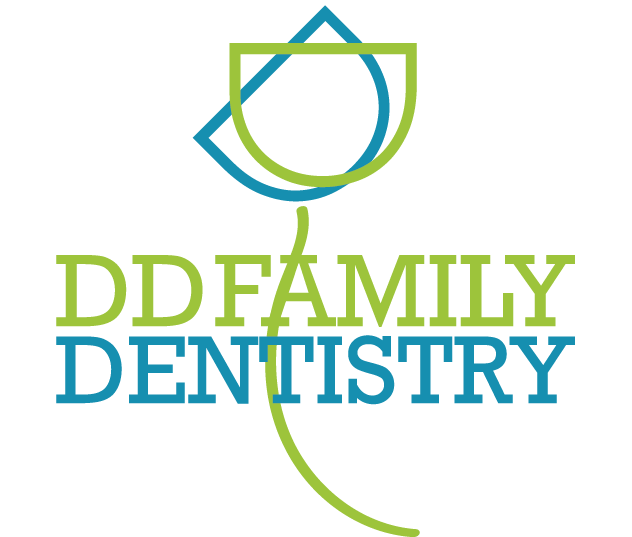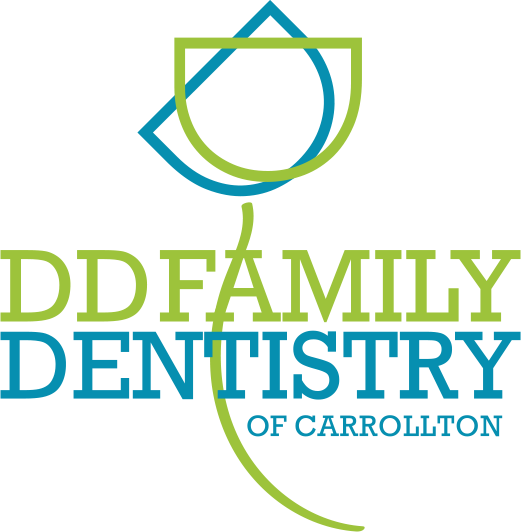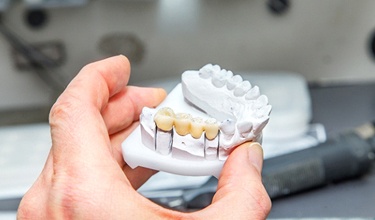Dental Bridges Carrollton
Helping You Smile with Greater Confidence
Tooth loss is a common issue that affects numerous people all across the country. Approximately 178 million Americans are missing at least one tooth. Fortunately, thanks to modern dental technology and techniques, losing a tooth no longer means that you need to go the rest of your life with an unsightly gap in your smile. At DD Family Dentistry of Carrollton, Dr. Durga Devarakonda offers customized dental bridges to restore the appearance and function of your smile. To find out if dental bridges in Carrollton are the right solution for you, contact our office for your initial consultation.
Why Choose DD Family Dentistry of Carrollton for Dental Bridges?
- Natural Materials Used to Create Beautiful Smiles
- Carefully Crafted Treatment Plans
- Pressure-Free Dentistry from a Caring Dental Team
What is a Dental Bridge?
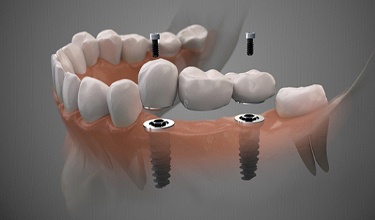
A dental bridge is a type of restoration that’s used to replace consecutive missing teeth. This can be anywhere from one tooth to four teeth in a row. The bridge is composed of two crowns and several replacement teeth known as “pontics.” The crowns are anchored onto the adjacent teeth or implants, depending on the type of bridge you opt for. Bridges can be made out of a variety of different materials, but porcelain is a popular option because of its durability and natural appearance.
Types of Dental Bridges

If it’s determined that you make a good candidate for a dental bridge, you could end up with one of the following:
Traditional Bridge
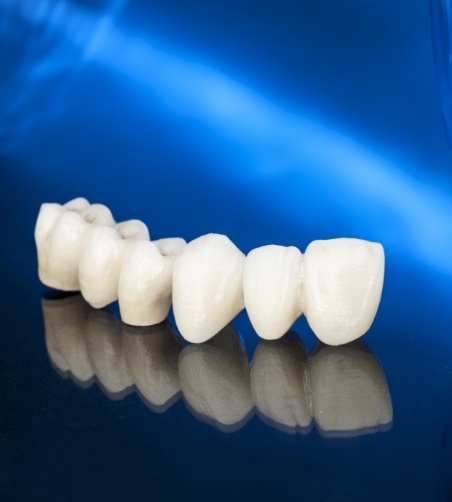
If you still have healthy teeth on each side of the gap, a traditional bridge is ideal. The teeth that support dental crowns are known as “abutment teeth,” and they need to be altered slightly for the bridge to fit properly. This type of restoration can be placed in just a few visits and is typically more affordable than its implant alternative.
Implant Bridge
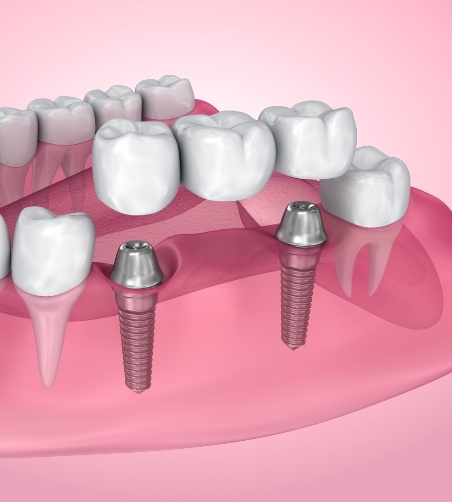
Dental implant bridges are used when there are three or more missing teeth in a row. Instead of being placed over abutment teeth, the crowns are placed on titanium implants that merge with the jawbone in a process called, “osseointegration.” Ultimately, the implants act as artificial tooth roots. Implant bridges tend to last longer than traditional ones, and they can prevent jawbone deterioration as a result of tooth loss.
The Benefits of Dental Bridges

A traditional dental bridge is a relatively simple yet cost-effective option for replacing missing teeth. In addition to providing strength and stability for chewing and speaking, they help maintain the structure of your face. They also keep your natural teeth from shifting around and causing alignment issues later on.
Dental Bridge FAQs
Can you take a dental bridge out?
Dental bridges are designed to remain in your mouth for many years after being placed. You shouldn’t be able to take your bridge out on your own – only with the help of a dental professional. Some healthcare providers will call partial dentures “removable bridges,” but this isn’t entirely accurate. Partials are similar to bridges, but one of the key differences is that partials can be removed by the patient at any time, while bridges are fixed into place.
Is getting a dental bridge painful?
Before preparing your teeth for the bridge, Dr. Durga will numb the teeth that she will be working on. You shouldn’t feel any discomfort during the procedure, but your underlying teeth may be sensitive for a few days afterward. This can be managed with over-the-counter pain relievers. Because bridges keep your remaining teeth from drifting out of place, they can actually help to prevent discomfort later on caused by dental drift.
How many teeth can a dental bridge replace?
Depending on the patient’s needs, a dental bridge can replace anywhere from one to four missing teeth in a row. However, in most cases, bridges are used to replace only one or two teeth. The longer the bridge extends, the less stable it becomes. Ultimately, it can be riskier to have a bridge replace three or more teeth. Opting for an implant bridge can lower this risk, as implants are just as strong and secure as natural teeth.
Do dental bridges feel natural?
Within a few days of receiving your permanent dental bridge, it should start to feel increasingly natural. Bridges are made from durable materials that can stand up to everyday chewing forces just as easily as tooth enamel, so eating with your bridge shouldn’t feel strange. The reason your abutment teeth are reshaped is to ensure that the bridge will fit comfortably in your mouth. Additionally, every bridge is custom-made based on impressions taken of the tooth.
